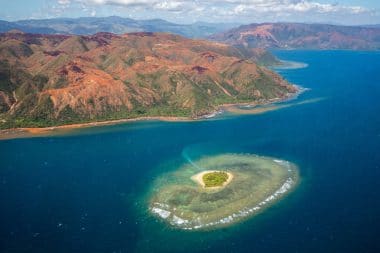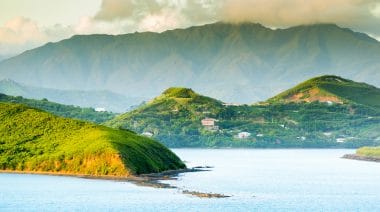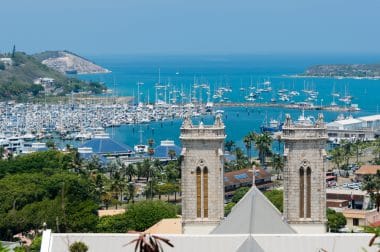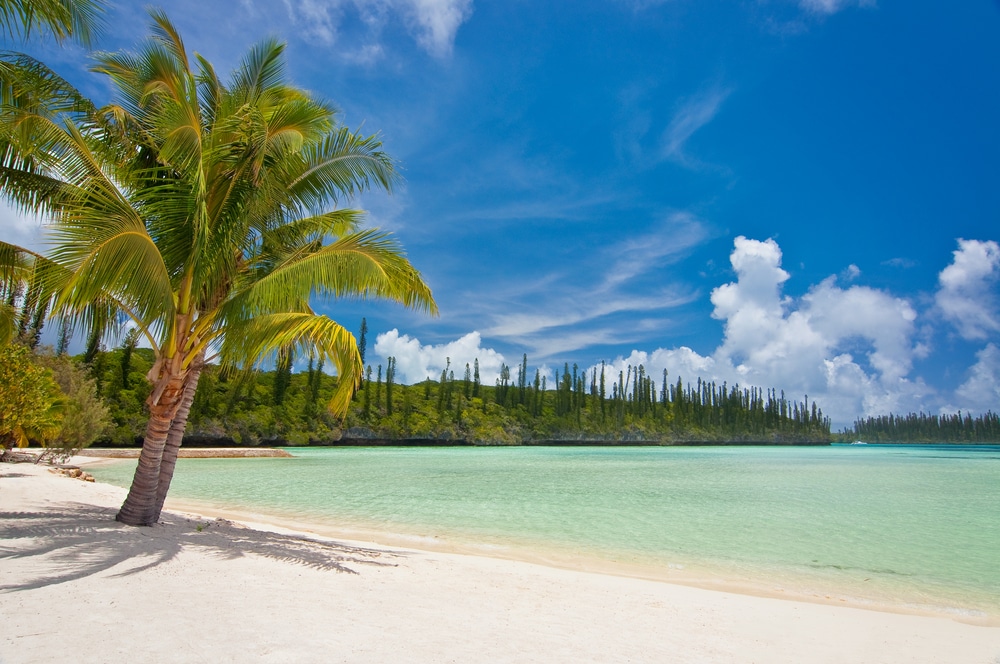When you think of a South Seas holiday, New Caledonia is probably not the first thing that comes to mind. The archipelago east of Australia in the Pacific is actually in no way inferior to its better-known neighbor Vanouta: Miles of sandy beaches, turquoise blue sea, tropical climate – a unique nature. All the prerequisites for a wonderful holiday.
Since its discovery in 1774 by Thomas Cook, who also gave New Caledonia its name, the archipelago has experienced an eventful history. Among other things, as a French colony. Even today, after the last referendum in 2018, New Caledonia is part of France as a so-called “French Overseas Territory”.

This has a clear influence on the dominant culture – especially in Nouméa, the capital of New Caledonia, which is located on the island of Grand Terre. Here, a large part of the inhabitants are of European origin. And if you take a stroll through the capital’s trendy district, you will feel strongly reminded of the ambience of the Côte d’Azur in France . Here, bars, bistros and restaurants with French-inspired cuisine are lined up, offering a pleasantly relaxed flair and good food.
Geographically, however, New Caledonia belongs to Melanesia, with a tropical climate and fauna and flora that are largely endemic. The descendants of the indigenous people – Melanese and Kanaks – live for the most part in the sparsely populated surrounding area. Village structures and ancient tribal cultures have been largely preserved here.
Many animal species and plants are only found here in New Caledonia. The main island, Grand Terre, is surrounded by numerous smaller islands. Lifou, Ouvéa, Belep, Maré and the beautiful Île des Pins. To name only the most important ones. Smaller islands where only a few people live, which means that they still fulfill the cliché of the lonely island that many urban stress-seekers sometimes wish to visit.
New Caledonia – coral reefs, powder beaches and other worthwhile destinations

Each of the smaller islands has beautiful, white-powdered beaches surrounded by palm trees. In total, it is a whopping 2254 kilometers. Particularly famous is Kuto Bay, which is considered one of the most beautiful in the world with its natural ambience and its shimmering blue, crystal-clear waters.
A paradise for snorkelers and divers is the New Caledonian Barrier Reef, which has formed around Grand Terre. In 2008, it was declared a UNESCO World Heritage Site thanks to its unique reef structure. Rare fish species, turtles and an infinite number of corals can be observed here under water. Simply great what nature has created here.
More than an insider tip for snorkeling is also the so-called “Piscine Naturelle”, on the island of Île des Pins. A pool “built” by nature, which is home to numerous small and large exotic fish. A magical place that is best visited in the early morning. Then, when there aren’t too many other human visitors in the water who have already heard how beautiful it is here. The interior is characterized by forests and hilly terrain up to rugged mountain ranges. A mountain range runs through the middle of Grand Terre and forms an ideal terrain for mountain bike tours.
Sights, luxury, good food – and real island life too
Urban life with hotels, exclusive fashion boutiques and good restaurants can only be found in Nouméa, the capital, which is also the only major city in the country. If you prefer to get to know the original island life and can do without Western-influenced luxury: There is also the possibility to stay in smaller private guesthouses and quarters in the village area.

If you want to get an even deeper insight into the cultural history of the indigenous people, you should definitely visit the Tjibaou Cultural Center in Nouméa. It consists of a building complex designed by star architect Renzo Piano and is modelled on the traditional living huts of the Kanaks. Paintings, art objects and historical finds illustrate the cultural history from the beginning to the present day very well.
Another attraction is the Saint Joseph Cathedral, which is enthroned on a hill just outside and can be reached on foot from the city centre within a few minutes. And if you just can’t get enough of the wide view of the sea, a trip to the Phare Amédée is recommended. The 56 m high lighthouse on a small coral island offers a beautiful view from above over the water and the natural island landscape.
And as far as the culinary delights are concerned, the food is also very French, especially in Nouméa. A large part of the food, from sparkling wine, wine and champagne to meat and vegetables, is imported and imported from far away across the Pacific. But there are also typical dishes on the menus, in which local fish is also used. Bougna is particularly typical and recommended.
This is a dish that is common to all Pacific islands in its way of preparation. The ingredients – mainly chicken, lobster and fish – are napped with coconut milk and wrapped in banana leaves. The small packets are then cooked on hot stones in the traditional earth oven. The result: delicious! Real island-typical taste.
The conclusion: Even though the area has unfortunately been hit by stronger earthquakes recently (2018 and 2019) – New Caledonia offers all the possibilities for a dream holiday that offers a small taste of paradisiacal ambience during your lifetime. And because it is still considered an insider tip among those seeking relaxation and water sports enthusiasts, those looking for a real nature experience will get their money’s worth here. In an area that is not yet so overrun by tourists.


